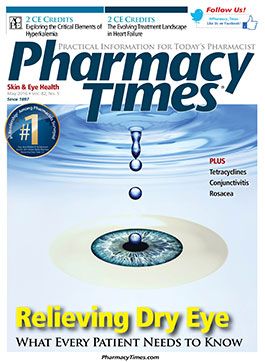Publication
Article
Pharmacy Times
Pharmacy Technicians in Transitions of Care
Author(s):
Because transitions of care require the coordination of patient care activities to ensure appropriate services are received, collaboration between all practitioners involved in the treatment plan is essential.
Our Voice is a Pharmacy Technician Journaling Initiative involving pharmacy technicians from many different areas and diverse pharmacy practice types. Each month, this group answers a series of questions on specific topics related to patient care, industry trends, and practice innovation. The focus of this project is to explore existing practice models with the hope of educating on new initiatives, standardizing practice, and creating a vision for future pharmacy technicians.
Transition of care (TOC) describes the movement of a patient from one health care setting to another. This movement can occur within the same location (such as a patient being transferred to a different unit in a hospital) or between several locations (such as a patient being admitted into a hospice or palliative care program from a treatment unit), and even includes the treatment of a patient at home through a home health agency.1 Because TOC requires the coordination of patient care activities to ensure appropriate services are received, collaboration between all practitioners involved in the treatment plan is essential.2-4
However, communication between providers, caregivers, nurses, pharmacy, and other ancillary departments is not always efficient throughout these transitions. When there is a breakdown in transitional processes, it can prevent the facilitation of a smooth and safe transition for each patient, potentially leading to adverse events such as hospital readmissions or medication errors.1,4 Because of these identified trends of misadventures due to ineffective care transition processes, hospitals may face financial penalties under the Affordable Care Act for higher readmission rates for Medicare and Medicaid patients.1,5
As government and accreditation bodies continue to monitor TOC programs, pharmacy technicians have played an increasingly important role in TOC by helping to complete home medication lists and verifying the accuracy of any medications entered by a nurse through medication reconciliation. The importance of this process cannot be understated: if a patient is admitted and the medication list is entered into the electronic health record (EHR) with inaccurate or missing information, the patient could be given the wrong dose or given a medication at the wrong frequency.
Although pharmacy technician involvement in medication reconciliation is an increasing trend among employers, just 39% of the technicians in the Our Voice study had any involvement in TOC. However, one area of technician involvement demonstrated in Our Voice was Meds to Beds, a prescription delivery program that provides medication to patients before they are discharged. By filling these prescriptions for patients, technicians ensure that patients will leave with the medications they need to continue therapy, as well as provide patients with an opportunity to interact with pharmacy staff prior to discharge to resolve any discrepancies and answer any questions about medication use. This has been shown to lower readmission rates for patients who leave with their medications instead of filling them on their own.5
Once a patient has been discharged, pharmacy technicians can continue involvement in TOC through medication therapy management (MTM) services. Through a collaborative agreement with the patient’s provider, pharmacy staff can help manage patient care and work together to achieve desired outcomes. One technician in the Our Voice study was given the role of developing an MTM program for 25 physician clinic groups, while another technician entered referrals and sent secure data transmission through the EHR to the referred facility. This collaboration also helps providers fulfill the criteria for Meaningful Use, a set of objectives that practitioners and hospitals can achieve to receive Centers for Medicare & Medicaid Services incentive programs.
Ultimately, each pharmacy practice site has an opportunity to include its technicians in the TOC process; indeed, almost half of Our Voice participants felt that they could be more involved with TOC services. Retail technicians can assist with MTM services, and mail order technicians can help ensure the correct medications reach patients who may be transitioning from hospital to home care. Pharmacy technician educators can also teach the importance of TOC practice models. Overall, pharmacy involvement can help resolve discrepancies, proactively address medication- use issues, help reduce readmissions, and prevent medication errors from occurring.6
Kristy Malacos, MS, CPhT, is the pharmacy administrator at Magruder Hospital in Port Clinton, Ohio, through Pharmacy Systems, Inc.
References
- Transitions of care: the need for a more effective approach to continuing patient care. The Joint Commission website. jointcommission.org/assets/1/18/hot_topics_transitions_of_care.pdf. Published June 20120. Accessed April 2016.
- NTOCC Measures Work Group. Transitions of care measures. National Transitions of Care Coalition website. ntocc.org/Portals/0/PDF/Resources/TransitionsOfCare_Measures.pdf. Published 2008. Accessed April 2016.
- McDonald KM, Sundaram V, Bravata DM, et al. Closing the Quality Gap: A Critical Analysis of Quality Improvement Strategies. Vol 7. Rockville, MD: Agency for Healthcare Research and Quality; 2007. Making content easier to read in BookshelfClose
- Improving care transitions. Medicaid website. medicaid.gov/medicaid-chip-program-information/by-topics/quality-of-care/care-transitions.html. Accessed April 2016.
- Thompson CA. Pharmacy departments innovate to reduce readmissions penalty [news release]. Bethesda, MD: American Society of Health-System Pharmacists; January 30, 2013. ashp.org/menu/News/PharmacyNews/NewsArticle.aspx?id=3856. Accessed April 2016.
- Carr LS, Cohen E. Meds to Beds: delivering reduced readmissions, lower costs, and improved quality. http://c.ymcdn.com/sites/www.mashp.org/resource/resmgr/MSHP_Annual_Meeting_2015_Pres/MSHP_Laura_Carr_Ed_Cohen_Sli.pdf. Published April 22, 2015. Accessed April 2016.







